DDR5 SODIMM
( number of products: 42 )

Memory RAM 1x 32 GB Samsung SO-DIMM DDR5 4800MHz PC5-38400 | M425R4GA3BB0-CQK


Memory RAM 1x 8 GB Samsung SO-DIMM DDR5 4800MHz PC5-38400 | M425R1GB4BB0-CQK


Memory RAM 1x 32 GB Hynix SO-DIMM DDR5 4800MHz PC5-38400 | HMCG88MEBSA095N


Memory RAM 1x 8 GB Hynix SO-DIMM DDR5 4800MHz PC5-38400 | HMCG66MEBSA092N
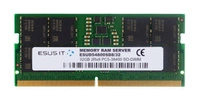

Memory RAM 1x 32 GB ESUS IT SO-DIMM DDR5 4800MHz PC5-38400 | ESUD54800SD8/32G


Memory RAM 1x 8 GB ESUS IT SO-DIMM DDR5 4800MHz PC5-38400 | ESUD54800SS16/8G


Memory RAM 1x 16 GB Crucial SO-DIMM DDR5 4800MHz PC5-38400 | CT16G48C40S5


Memory RAM 8GB Crucial SO-DIMM DDR5 4800MHz PC5-38400 | CT8G48C40S5


Memory RAM 1x 32GB Micron SO-DIMM DDR5 4800MHz PC5-38400 | MTC16C2085S1SC48BA1


Memory RAM 32GB kit (2x 16GB) Crucial SO-DIMM DDR5 4800MHz PC5-38400 | CT2K16G48C40S5


Memory RAM 64GB kit (2x 32GB) Crucial SO-DIMM DDR5 4800MHz PC5-38400 | CT2K32G48C40S5
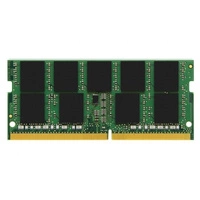

Memory RAM 1x 32GB Kingston SO-DIMM DDR5 5600MHz PC5-44800 | KCP556SD8-32


Memory RAM 1x 32 GB Hynix SO-DIMM DDR5 4800MHz PC5-38400 | HMCG88AEBSA095N


Memory RAM 1x 32GB Crucial SO-DIMM DDR5 4800MHz PC5-38400 | CT32G48C40S5


Memory RAM 1x 16 GB Samsung SO-DIMM DDR5 4800MHz PC5-38400 | M425R2GA3BB0-CQK
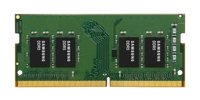

Memory RAM 1x 16 GB Samsung SO-DIMM DDR5 5600MHz PC5-44800 | M425R2GA3BB0-CWM
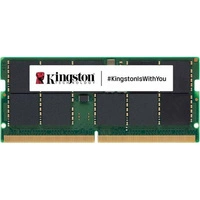

Memory RAM 1x 16GB Kingston SO-DIMM DDR5 5600MHz PC5-44800 | KVR56S46BS8-16
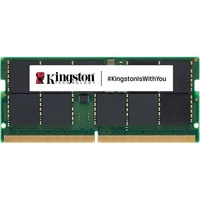

Memory RAM 1x 32GB Kingston SO-DIMM DDR5 5600MHz PC5-44800 | KVR56S46BD8-32
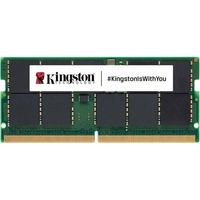

Memory RAM 1x 48GB Kingston SO-DIMM DDR5 5600MHz PC5-44800 | KVR56S46BD8-48
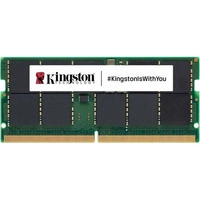

Memory RAM 1x 8GB Kingston SO-DIMM DDR5 5600MHz PC5-44800 | KVR56S46BS6-8


Memory RAM 1x 16 GB Samsung SO-DIMM DDR5 4800MHz PC5-38400 | M425R2GA3BB0-CQK


Memory RAM 1x 32 GB Hynix SO-DIMM DDR5 4800MHz PC5-38400 | HMCG88MEBSA092N


Memory RAM 1x 16 GB Hynix SO-DIMM DDR5 4800MHz PC5-38400 | HMCG78MEBSA092N


Memory RAM 1x 16 GB Hynix SO-DIMM DDR5 4800MHz PC5-38400 | HMCG78MEBSA095N
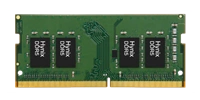

Memory RAM 1x 8 GB Hynix SO-DIMM DDR5 4800MHz PC5-38400 | HMCG66MEBSA095N
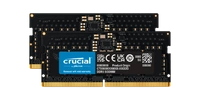

Memory RAM 1x 16 GB Crucial SO-DIMM DDR5 4800MHz PC5-38400 | CT16G48C40S5


Memory RAM 1x 32 GB Samsung SO-DIMM DDR5 5600MHz PC5-44800 | M425R4GA3BB0-CWM
- 1
- 2
Memory RAM DDR5 SODIMM
RAM is responsible for the smooth operation of the device and improves the experience of using various types of software. Thanks to RAM bones, every computer runs smoothly and efficiently, but due to different technological solutions, some bones produce better results than others. How to recognise good components for a laptop and what is the basis for choosing a RAM bone?
It is worth remembering that each laptop or server has different hardware requirements - when choosing RAM, the most important thing is to select a bone with an interface that matches the requirements of the motherboard in question. RAM SO-DIMMs (small outline dual in-line memory module) are popularly used in laptops. However, special care should be taken to match the type of memory to the computer's processor. The latest and long-awaited type of RAM dice is DDR5, however, due to the relatively short time of product circulation on the market, not many laptops can yet use this type of component.
RAM DDR5 for laptop - SO DIMM, not DIMM
DIMM-type RAM is a bone mainly supported by desktop computers. An elongated, rectangular module, it is characterised by the presence of as many pins as required to connect to components designed primarily for desktop computers. SO-DIMM RAMs differ from the former mainly in format. The dual line of memory modules is contained in a smaller casing and is suitable for use in smaller hardware, such as laptops, among others.
The technical space of a laptop is considerably smaller than that of a PC, which is why special SO-DIMM sockets were created for SO-DIMM RAM dice, allowing the component to be mounted horizontally. In addition to the interface of the RAM bone, its type also matters. What does the new DDR5 RAM offer and how does it outperform its predecessor, DDR4?
DDR4 RAMs are still the most popular and common version of RAM. They are characterised by an optimum power consumption of between 1.05 and 1.2 volts, indicating relative energy efficiency. They offer quite high, although not the highest, clocking of up to 3200 MHz and optimum bandwidth, so they are ideal for use in home laptops or those used on a daily basis to work on demanding programmes such as graphics.
DDR5 is the latest technology, which assumes a significant increase in hardware performance. Therefore, it started by increasing the communication channels - in DDR5 these are dual-channels, assuming the same data transfer bandwidth. This allows you to use a single DDR5 bone, which will have a similar effect to using a dual-channel DDR4 bone. If, on the other hand, you choose the DDR5 dual-channel version - you will gain the previously unavailable quad-channel mode in standard solutions.
DDR5 Memory RAM
DDR5 RAM is a real technological shift. DDR5 dice offer significantly higher capacities - up to 2 TB in total, which was previously unattainable. The clock frequency for DDR5 dice is as high as 7200 MHz. The new RAM dice are equipped with 288 pin connectors. Safety of the devices has also been thought of and the DDR5 RAM dice can be equipped with heatsinks, cooling the component in a passive manner.
Energy efficiency, so important mainly for server solutions, has been increased in DDR5 dice compared to DDR4 RAM versions. They consume a current of 1.1 V, so they will prove useful wherever continuous operation of the device requires energy optimisation. One of the most relevant RAM parameters is the CL (CAS latency), which indicates the time between sending a request and reading data. In the case of DDR5, it is roughly 40, so the performance of the dice is undoubtedly higher than that of the DDR4 version.
Depending on the intended use of the DDR5 RAM dice, you can choose an ECC-enabled version or select a non-ECC version. Error Correction Code works well in servers, where it is important to maintain continuous operation and stabilise system performance. However, it is not the best solution for laptops, as it reduces the speed of operation.





